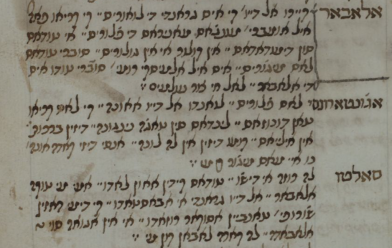Isac Haim
62. Cantes amargos (Isac Haim)
Considering its substantial documentation, it is evident that this song was very popular in Istanbul at the beginning of the twentieth century. A long version of sixteen stanzas was published in the Ladino journal El juguetón (Istanbul, March 20, 1912) under the title “Nueva romans” and reprinted in El buquieto de romanzas (Istanbul 1926, pp. 46-47). Not long after its first publication the song was recorded by both Isac Haïm and Isaac Algazi, whose recording did not survive. Isac Haïm’s version is very short and covers only two stanzas of the printed text. Various stanzas of this text can be found in popular Ladino şarkis, as is the case with Isac Haïm’s third stanza, usually known as Los bilbilicos (see Attias 1972, nos. 113, 114, 119; for the opening couplet see, Attias 1972, no. 124, second stanza). Haïm’s musical rendition is in the Turkish ghazel style (in makam Saba), i.e. couplets without a clear beat, opening and closing with interjections such as “ah” and “amán.” The oud punctuates the pauses between the couplets.
Ah, amán, cantes amargos quero cantar
en la orilla de la mar, amán Amán,
no me dejes amargar.
Por tí me vo entiquiar, ah.
Ah, en mi edad unos cuantos
y se burlan del amor, amán.
Ah, amán, los pájaros chulchulean
en los árboles de flores.
Ah, amán, abajo se asentan los que sufren d’amor
con sospiros de corazón.






